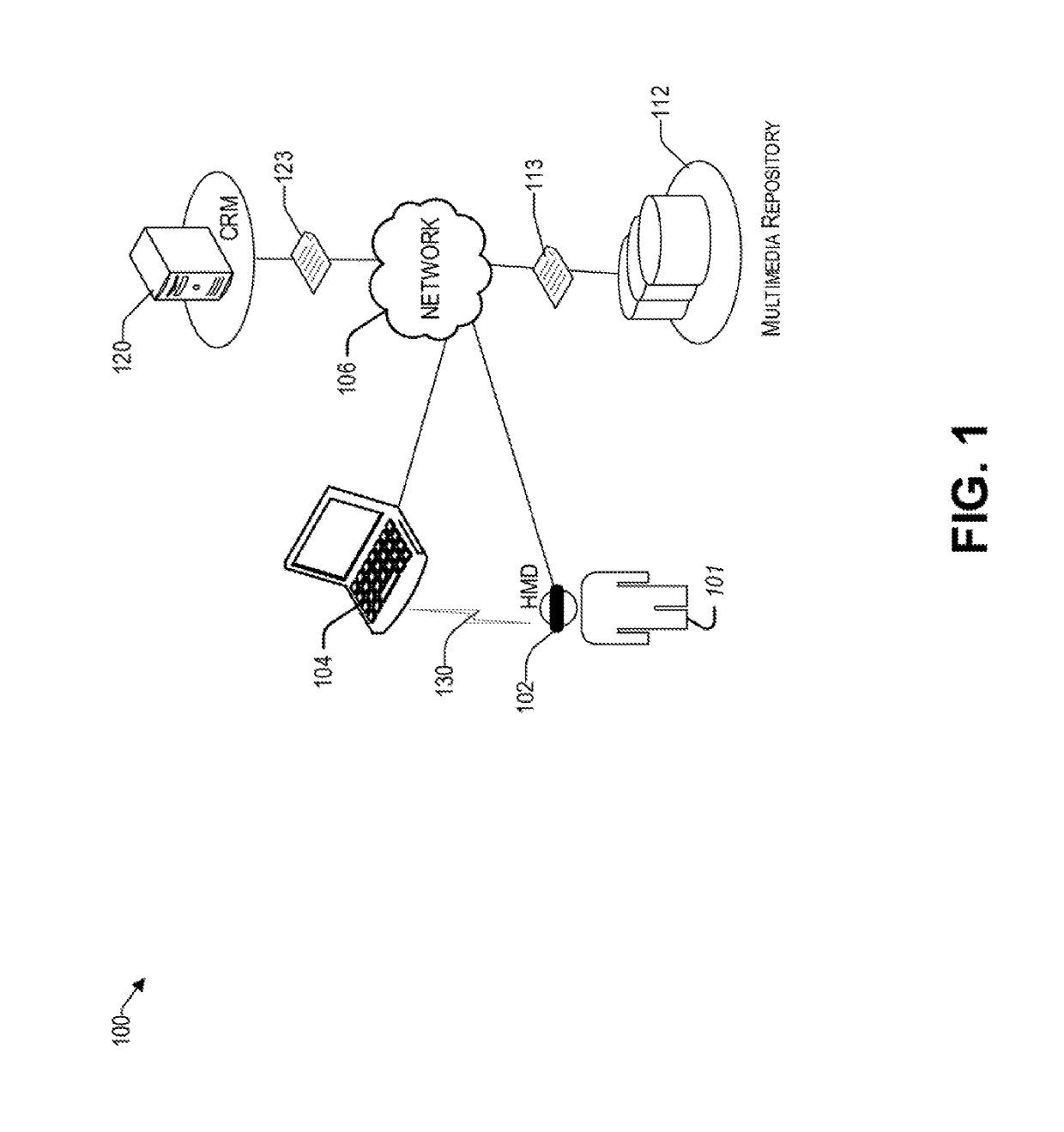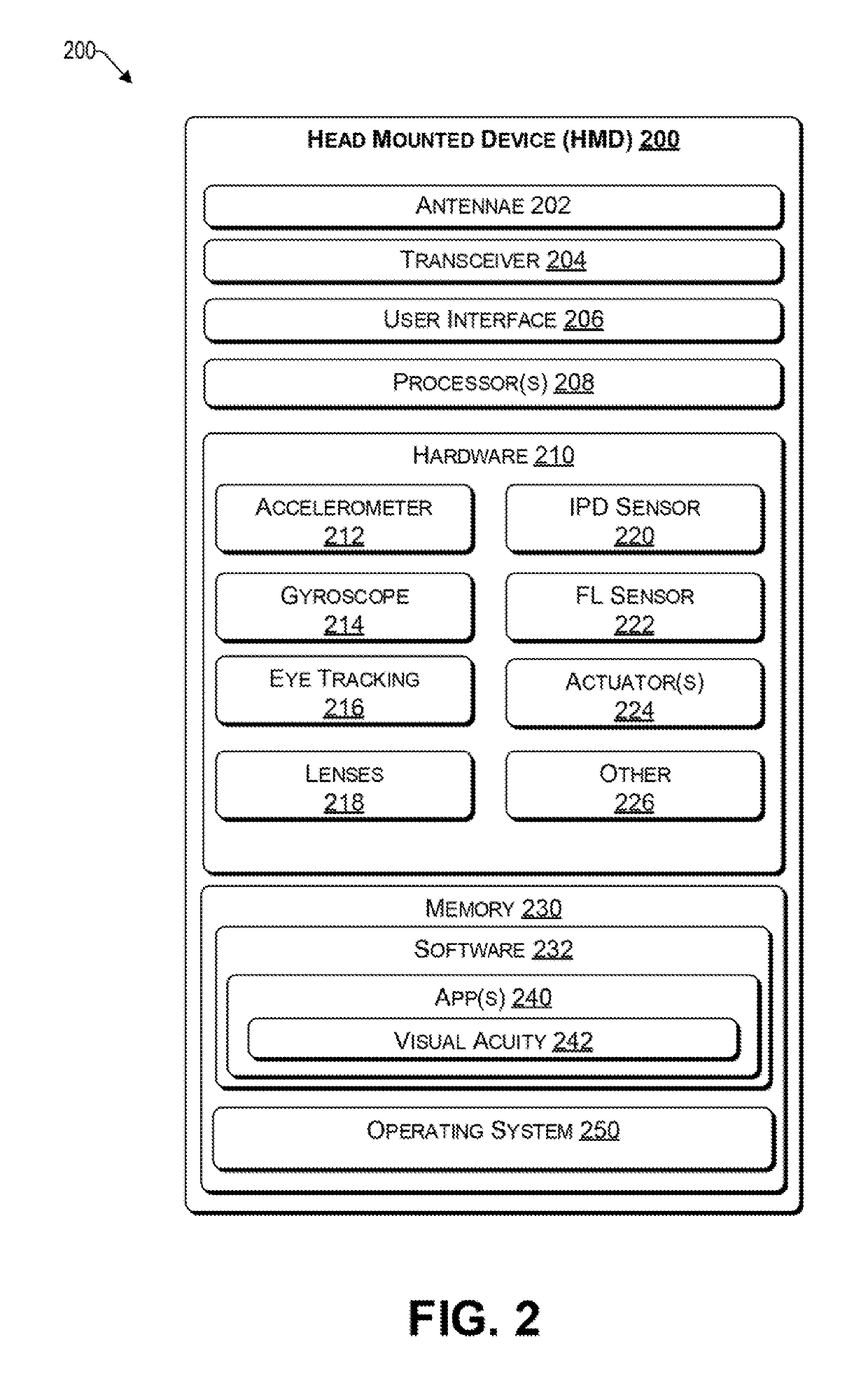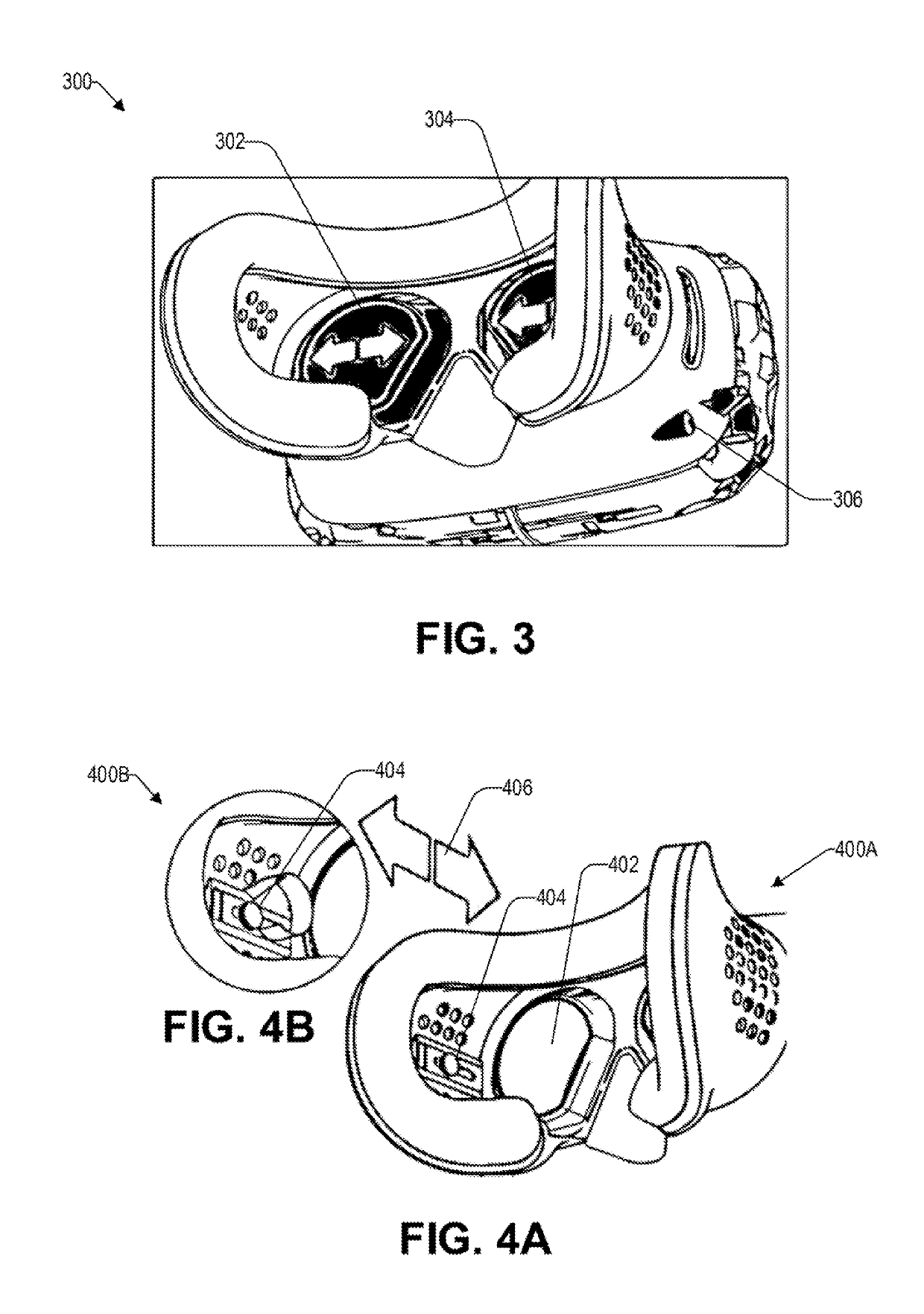Adaptive Rendering of Virtual and Augmented Displays to Improve Display Quality for Users Having Different Visual Abilities
a technology of virtual and augmented displays and adaptive rendering, which is applied in the field of virtual, augmented and mixed reality displays, can solve the problems of not being able to provide optimal experience to users wearing hmd, affecting the visual ability of users, and being uncomfortable and sometimes impossible to use additional lenses that are not integrated into the hmd, so as to achieve the effect of time-efficient determination of visual ability of users
- Summary
- Abstract
- Description
- Claims
- Application Information
AI Technical Summary
Benefits of technology
Problems solved by technology
Method used
Image
Examples
example architecture
[0023]FIG. 1 illustrates an example architecture 100 for providing a synthetic reality based on the visual abilities of a user 101. There is an HMD 102 that is worn on the head or as part of a helmet of a user 101. The HMD 102 may have a display in front of one or more eyes of the user 101. In various embodiments, the HMD 102 may have a separate display for one or more eyes, or a single display to accommodate both eyes concurrently (e.g., half the display, sometimes referred to herein as a screen, is allocated for the left eye and the other half is allocated for the right eye). Different types of displays include, without limitation, TFT-LCD, IPS-LCD, OLED, AMOLED, Super AMOLED, Retina Display, etc. In one embodiment, in addition to visual feedback, the HMD 102 discussed herein may also provide additional sensory feedback, such as sound, haptic, smell, heat, and moisture.
[0024]The HMD 102 is configured to provide a virtual, augmented, and / or mixed reality experience that takes into ...
example process
[0070]With the foregoing overview of the architecture 100, example HMD 200, and example scenarios, it may be helpful now to consider a high-level discussion of an example process in the form of a flow chart. To that end, FIG. 7 presents a process 700 for the adaptive rendering of a displays of an HMD based on the visual ability of a user, consistent with an illustrative embodiment.
[0071]Call flow 700 is illustrated as a collection of processes in a logical flowchart, which represents a sequence of operations that can be implemented in hardware, software, or a combination thereof. In the context of software, the processes represent computer-executable instructions that, when executed by one or more processors, perform the recited operations. Generally, computer-executable instructions may include routines, programs, objects, components, data structures, and the like that perform functions or implement abstract data types. The order in which the operations are described is not intende...
PUM
 Login to View More
Login to View More Abstract
Description
Claims
Application Information
 Login to View More
Login to View More - R&D
- Intellectual Property
- Life Sciences
- Materials
- Tech Scout
- Unparalleled Data Quality
- Higher Quality Content
- 60% Fewer Hallucinations
Browse by: Latest US Patents, China's latest patents, Technical Efficacy Thesaurus, Application Domain, Technology Topic, Popular Technical Reports.
© 2025 PatSnap. All rights reserved.Legal|Privacy policy|Modern Slavery Act Transparency Statement|Sitemap|About US| Contact US: help@patsnap.com



